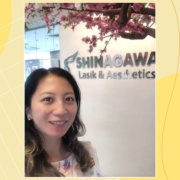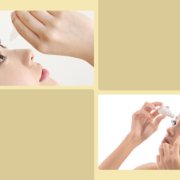It’s Never Too Late For A Perfect Vision
Equipped with the most advanced technology and innovative eye treatments, anything is possible at Shinagawa.
Despite a very high eye grade of 825/750, Shinagawa was able to successfully restore Mae Descalo’s ailing vision with an array of tested eye treatments.
“After a comprehensive eye screening at Shinagawa, we found out that I have a very high eye grade of 825/750 with a thin cornea. The doctor presented me with the treatment options available for my case,” shared Mae.
“I then had multiple procedures to get my eyes and vision fixed. I had Z Prime LASIK, Thin Flap Lining, and Corneal Cross-Linking in an hour-long procedure,” she added.
“After all the treatments, I am happy to share that I now indeed have a 20/12, even better than the 20/20 vision that I longed for! I can’t thank Shinagawa enough for this life-changing experience!”
Mae went on to share her primary purpose moving forward now that she has a bright vision.
“I’ve been wearing eyeglasses since I was 12 years old. It started with 125/175 eye grade. As years passed, it reached 450/400 already at the age of 22,” she shared.
“My dad always wants someone to continue his legacy of being a policeman. Since I passed the Civil Service exam last 2017, he always pushed me to apply to the Philippine National Police (PNP). I wasn’t as sure as I was visually impaired.”
“Now, I am planning to continue my dad’s legacy and join the force. I can’t thank Shinagawa enough for this life-changing experience!”
It might not be too late for your vision, too! Have a Comprehensive Eye Screening at Shinagawa and let us take a look at how we can map out proper treatment.
Call our Patient Care Lines: (+632) 7-368 5238 | (+63) 917 862 7454 | (+63) 921 217 0517 for inquiries and appointments.






